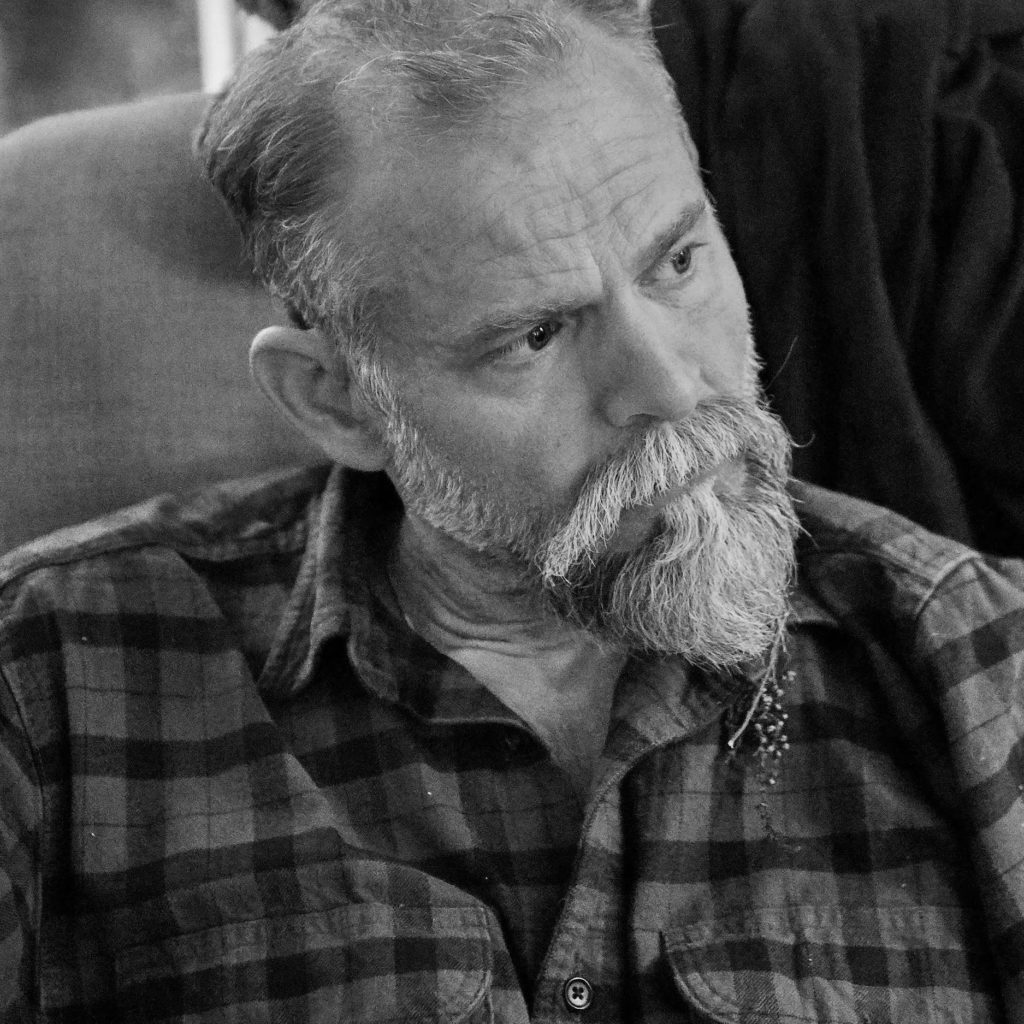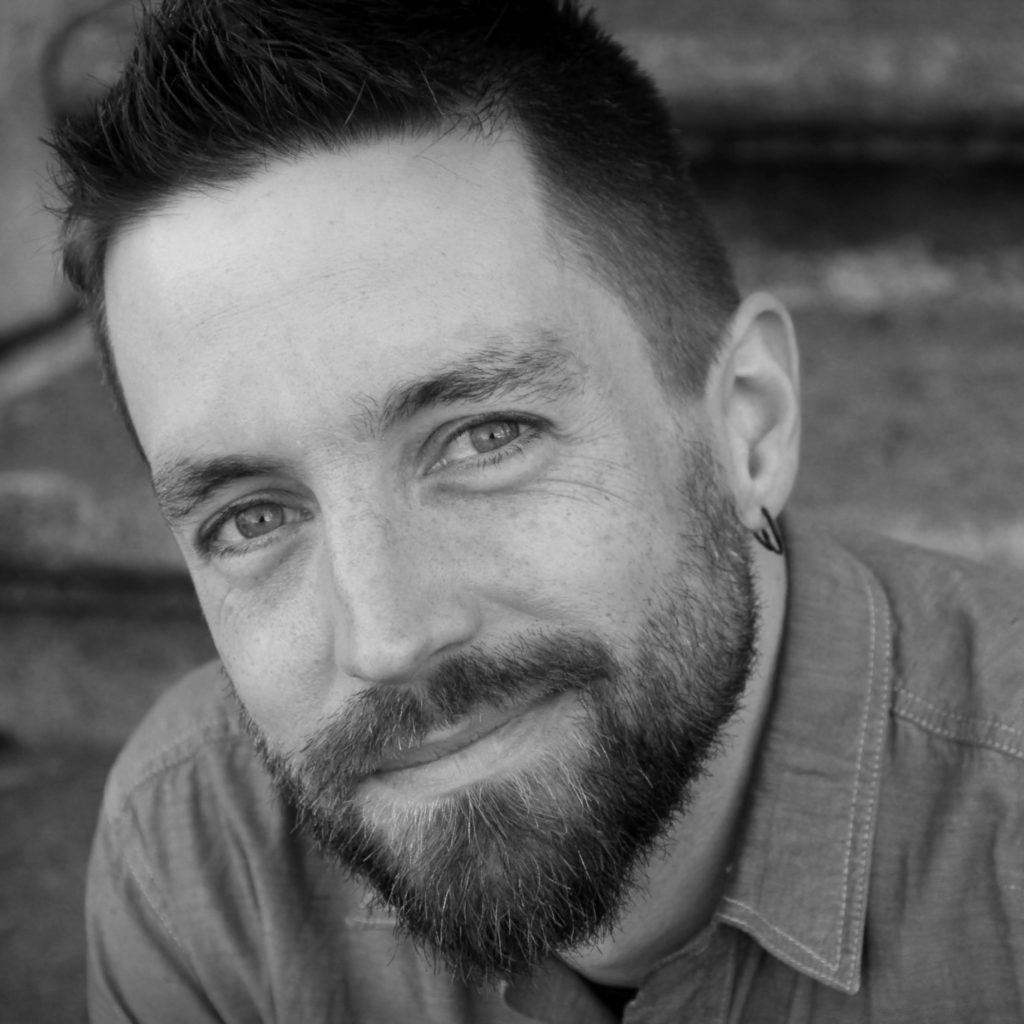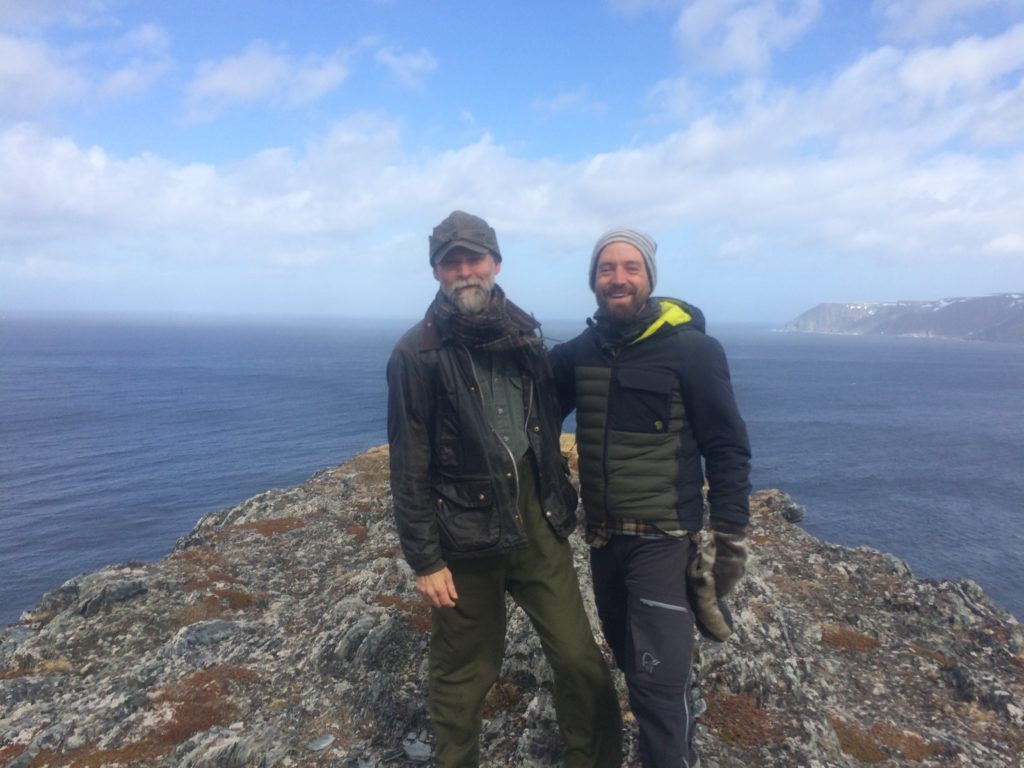Near & Far
Writer Damon Falke & Director Charles M Pepiton have been creating and producing work together for theatre and film since 2008.

Damon: It wasn’t long after we began Koppmoll that you started talking about an idea of near and far and how they relate to a person. I say “they,” but I took the words together—as a concept, as an idea—the nearness and farness of a single point or object. Now I am trying to remember how we got there. I recall that I had a slightly different idea, but you felt like we were suggesting something similar, only using different words.

Charlie: When we were first discussing Koppmoll, we were still calling the project Almost Bones. I believe we were talking about the shared compulsion we feel to find the center of a moment or to seek out the exact place that ignited an event or held a moment. We talk a lot about trying to see past certain physical realities into something more absolute. To glimpse the transcendent in the material, if only for a moment. In that particular conversation, I realized that you were continually using the word “far” while I used the word “near,” but I think we meant the same thing. The micro and the macro, in that sense, are both about perspective and presence of mind. It struck me as curious. I like the conflict between those words. Paradoxes like that make a nice frame for a project. You talk in the opening voice-over in the film about “wanting far” as opposed to wanting a direction. I’ve always had a want to draw near. Near is as much about space as it is about time, or put better, it’s about how space and time relate. As a theatre director, I’m most interested in how bits of action—the smallest playable moments on stage—tell us something significant. I’m interested in how those micro interactions or expressions aggregate to something larger or how in their brevity they might compress and reveal something that can’t quite be contained in anything larger. At the beginning and end of a rehearsal process, I’m most interested in single gestures an actor might give that seem to encompass an entire arc. That’s drawing near. It also works spatially and geographically. Consider how a single stone on a single beach, as we see in the film, sends us reeling through 75 years of memories.

In Koppmoll, we see near and far collide. Here you are at the geographic end of the Earth. You can’t go too much further north from where we find you on Nordkyn. You have come far in order to go near. Tore is in his backyard, by comparison, though he is far away from it in his mind. He has brought you, from far, to explore those things that have always been nearest to him. What we see him discover is the far-reaching consequence of those people and places nearest to him. The key characters in the film cross in their pursuits, and if we do our job as filmmakers, the audience might experience a similar journey. At least, they might come to feel an urge to make a similar journey and to look closely at their own places and memories. The idea is to advocate for story and memory and a more careful handling of those sacred places that hold us and form us. That seems to be a counter-cultural thing to reach for, given how much our times call us to focus on the future, or at least to focus on the next thing. You have a great line in The Sun is in the West. I think it’s the Photographer’s line. She says, “We want there to be consequence.” It’s a simple line, but it sticks with me. We aren’t often fully aware of the significance that each bit of our own playable experiences or places might have, the echoes that are everywhere, as you say in the film. To recognize consequence, you have to come near to moments and places, and I suppose it takes distance to see that closely.
We both just read Annie Dillard’s For the Time Being. I was struck by her paradox: “There is only matter…. There is only spirit.” And her urging to “subject a little more matter to spirit.” Drawing near, in my mind, means to somehow come to the intersection between space, time, matter, and spirit, while somehow maintaining enough critical distance to allow recognition of that arrival. For me, those moments of such saturated awareness are only ever fleeting. Maintaining that nearness seems an impossibility, but then that’s what drives the effort. Language can’t quite contain it, so there we have the frame for the film.

Damon: So much of our experience of near and far happens in silence, and I wonder if we need more guidance than silence, at least if we are considering an entire film. In the process of making Koppmoll, this is where I find myself becoming an awkward interviewer. I am trying to move moments out of silence, even when I know silence is essential. You say, strongly, “The idea is to advocate for story and memory and a more careful handling of those sacred places that hold us and form us.” Yet I am uncomfortable with the word advocate. I find myself wanting to say, “You advocate, Charlie. I write!” Though this too is part of our friendship, part of our long collaboration. Nevertheless, to witness someone’s inner experience of near and far would be to witness hours of silence, of seemingly vacant stares—not a film most people would wish to see. Silence followed by silence followed by silence feels like the equivalent of one or just a few words on a page, something at times I have tried in my own writing. I have had to ask myself, who wants to read so few words on a page? Or, more critically, who can take seriously one or a few words?
Charlie: I like that suddenly we’re speaking of silence. For me, the experience of being near is always a silent moment. And as I said, It’s not something that can be maintained for very long, either.
Silence seems to be having a cultural moment…at the moment. There are obvious reasons for that, given how flooded our frames are right now. Perhaps, it’s just one of those things where when you start to look for something you catch glimpses of it everywhere. There’s the One Square Inch project in Olympic National Park that’s trying to set up a “sanctuary for silence.” They make the odd choice of publishing the coordinates online for that one square inch of silence—N 48.12885°, W 123.68234°. There went the neighbourhood. Wasn’t Erling Kagge’s Silence: In the Age of Noise a bestseller last year? That was part of our reading in the months leading up to shooting Koppmoll. I just finished Kay Larson’s fantastic biography of John Cage, Where the Heart Beats. That book clocks in at 424 pages to tell the story of how John Cage came to embrace silence. It’s a long walk to get there, which seems right. I can’t think of anything that has more combined opposition. Have you seen Philip Gröning’s nearly 3-hour documentary Into Great Silence? It’s an audacious and beautiful film, but I couldn’t finish it. I think the problem is that it closes the loop too precisely for viewers. We see the monks in their silent routines. We feel the weight of it. There’s nothing for us to do. It’s all there, and we’re made passive by its completeness. It’s pristine. You know I have in mind to create a theatrical exploration of silence. It’s one of those long-range projects that needs stew for years before anything can start rolling. It would, I suppose, be the theatrical equivalent to your single word on the page. The thing I’ve been thinking about lately though is that silence cannot be illustrated. It cannot be demanded. Only the conditions for it can be constructed. I like that you say we need guidance instead of silence. I think that’s right. Silence needs be coaxed out. Anything theatrical, or cinematic for that matter, needs to delve more into the negative space around silence than into silence itself. If a piece closes the loop so neatly—if there’s nothing to work out—how can a viewer make a willing leap into silence? It’s like trying to shine a light on darkness. The same problem holds for urging an audience to find that near/far point of reflection that we’ve been speaking about. What I hope we can do with Koppmoll is to trust the audience to close the loop for themselves and for them to want to make that leap. The specificity of the oral histories of World War II make that a possibility. It’s not a philosophy disguised as a film. It’s a story about real memories in a real place. That materiality, I hope, makes the difference.
